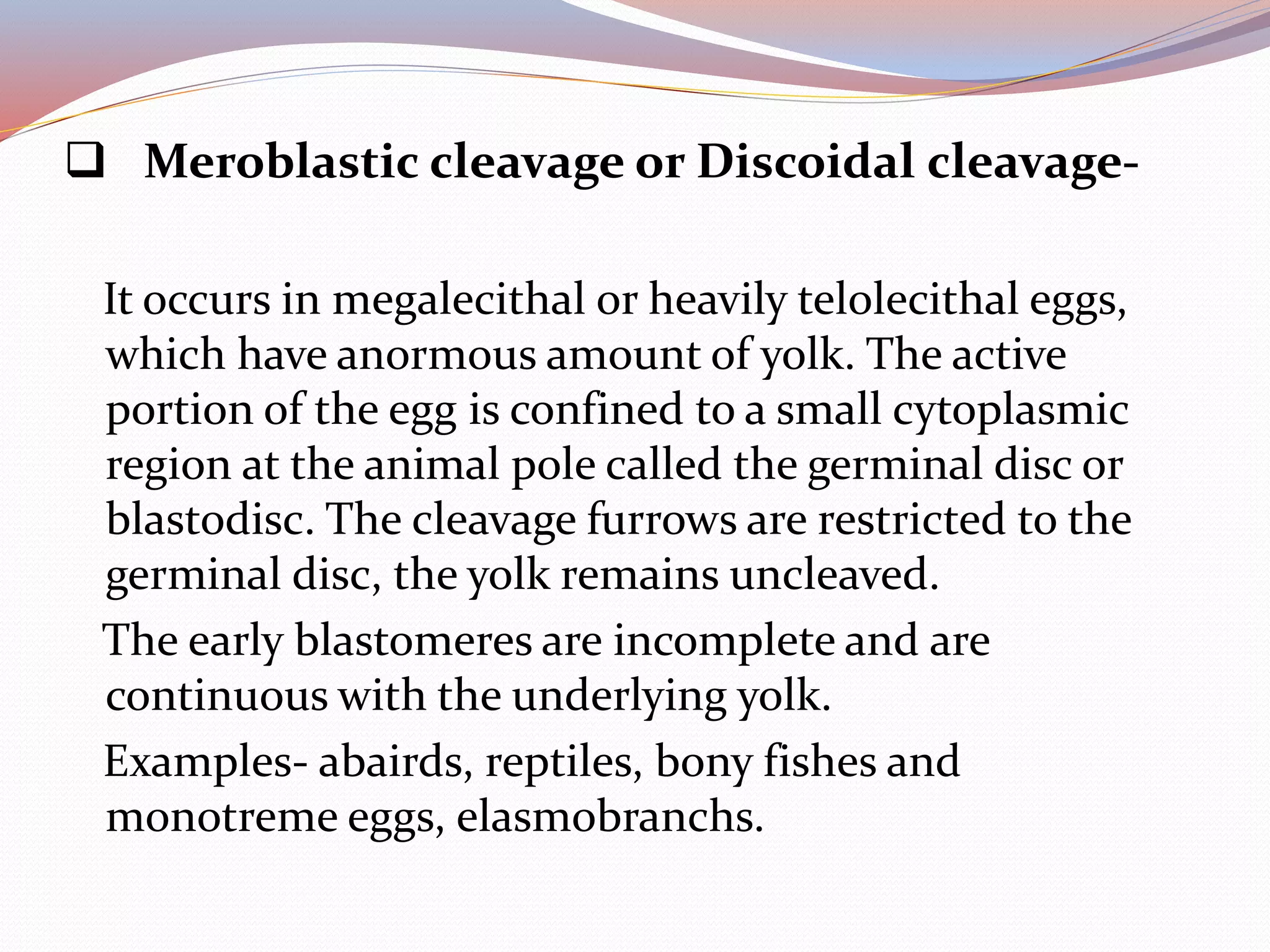1. Cleavage is the repeated division of the fertilized egg without an increase in size that produces an increase in the number of cells.
2. There are three main patterns of cleavage: holoblastic, where the cleavage furrow divides the entire egg; meroblastic, where cleavage is restricted to the upper disc region; and superficial, where early divisions occur in the surface layer.
3. Cleavage can also be classified based on the fate of blastomeres and their arrangement. Determinate cleavage leads to a mosaic embryo where blastomere fate is predetermined, while indeterminate cleavage blastomeres are less rigidly determined. Radial and spiral cleavage describe the arrangement of blastomeres



















